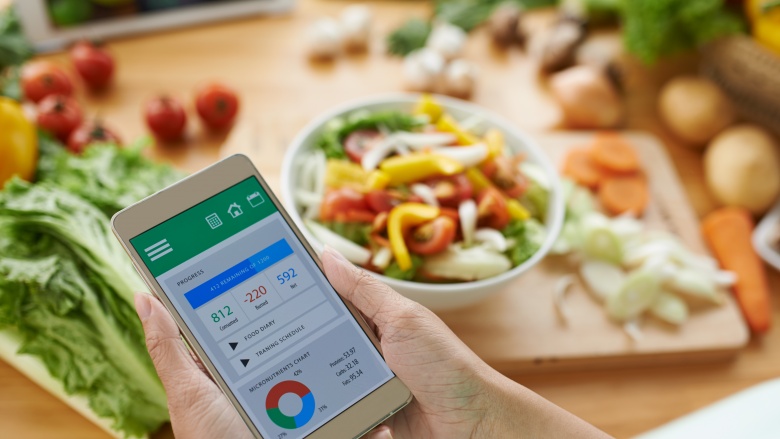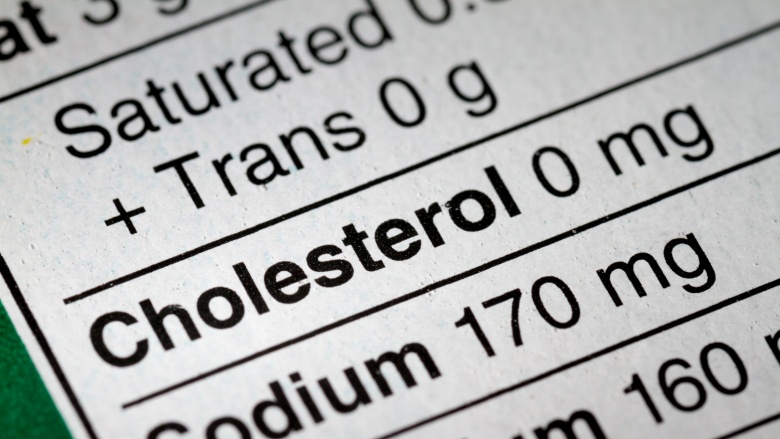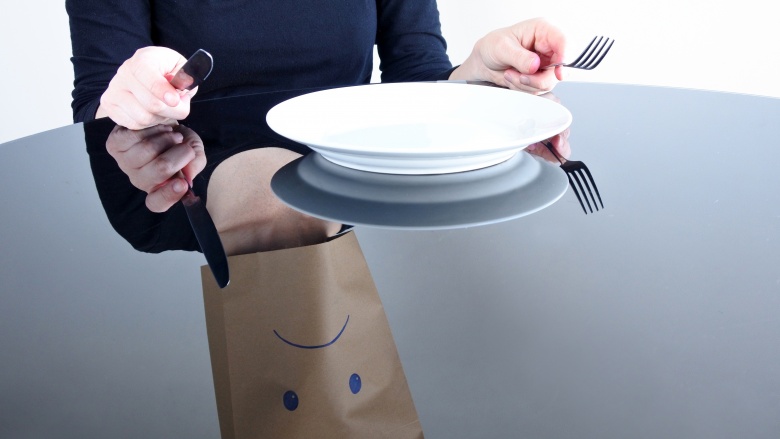Why Calorie Counting Isn't Working For You
We may receive a commission on purchases made from links.
Calorie counting: it sounds simple enough. If you want to lose weight, you just make sure you expend more calories than you consume. If that sounds even slightly complicated, the wonderful people that make your food tell you exactly how much you should eat.
But wait! The weight isn't coming off. Your meticulous calorie counting just isn't adding up. The good news is you're not alone. According to a survey from the United States Department of Agriculture (USDA), people routinely miscalculate their caloric intake, often underreporting the amount consumed. But even if you pinky swear that your calorie counting journal is completely accurate, that still might mean nothing in your quest to lose weight. Here's why.
What is a calorie?
So, this might seem like a dumb question. A calorie is the amount of energy needed to raise the temperature of one gram of water one degree centigrade. You may be wondering, what does that have to do with my back fat?
Calories are essential for living. The energy from calories consumed keeps our hearts pumping and our lungs full of air. That energy also repairs in our bodies when we are injured. By eating, we bring in the calories we need for our bodies to complete those basic functions. Unfortunately, since many of us lead sedentary or semi-sedentary lives, we don't get to burn off those calories from eating. Hence the back fat.
Calories in, calories out
One major issue with calorie counting is it's a catch-up game. One pound is equal to 3,500 calories. So if you want to lose a pound a day — though it's not recommended — you need to expend at least 3,500 calories. That's while not eating anything, which is also not recommended. So let's say you actually consume 2,000 calories per day, the daily recommended value. You would then need to burn 5,500 calories to lose that one pound.
In real numbers — in regards to caloric intake/reduction that is recommended for safe weight loss — you would need to burn at least an additional 500 calories each day to lose one pound per week. Double that number if you're aiming to lose two pounds per week. It might seem like no big deal, but burning that many calories isn't so easy. For women weighing approximately 165 pounds, it takes more than two hours of vigorous cycling to burn 500 calories, according to personal trainer and health blogger Douglas Robb's website.
Inaccurate equipment
You need a place to shake off those extra calories, and that's where the second problem in the calorie counting conundrum is found. If you work out in a gym, you likely use cardio machines like the treadmill, elliptical trainer, or stationary bike. Makers of these machines "help" consumers track their caloric progress with a calorie counter. But studies show those trackers are often wrong.
Good Morning America anchors teamed up with researchers at the University of California at San Francisco to see how accurate exercise machines were at tracking caloric expenditure. They found that machines overestimated calories lost by 19 percent on average. The worst offender was the elliptical machine, which overestimated calories burned by up to 42 percent. A more recent study published in the International Journal of Exercise Science confirmed that ellipticals are still overestimating.
Wearables may not be any better
If you think your Fitbit has your back, you're wrong again. A Good Morning America study found wearable technology overestimated the number of calories burned by 28 percent. However, a systematic review of two popular wearable brands — Jawbone and Fitbit — found they routinely underestimated caloric expenditure.
As wearables become more refined, a new market has cropped up: food intake trackers. However, that may not be the golden ticket just yet. Medical technology specialists say devices that can calculate calorie intake from your wrist are not feasible.
False advertising
Device manufacturers aren't the only ones getting the numbers wrong. Sometimes the food labels are incorrect, which can completely throw off your count. By law, the caloric information for processed foods can vary by up to 20 percent. So that 320-calorie sweet and spicy Korean beef stir-fry from the freezer section might actually be 384 calories.
A study looking at the caloric count of foods served at sit-down restaurants found that the calorie count of 19 percent of meals tested varied by at least 100 calories from the amount listed on the menu. Foods with the lowest stated caloric content were the most likely to have more calories.
Read the whole label
Even if the calorie count is accurate on the label, sometimes the problem isn't the calories, it's the other stuff. Many processed foods are loaded with sodium, which is linked to higher rates of heart disease and high blood pressure. Even "healthy" foods that are often low calorie can have very high levels of salt. Vegetable juice can have up to 480 milligrams of salt. It's also important to keep an eye out for the amount of sugar in foods. So-called healthy snacks can be packed with sugar. Things like yogurt, granola bars, and dried fruit are all teaming with sugar.
High sugar and sodium can stymie your weight loss success. More salt can cause you to retain water weight. Sugar increases your fat storage capability, making it even harder to shed those pounds.
Cooking changes everything
If you want to effectively lose weight, you will likely have to cook. Yet cooking is where the practice of counting calories falls apart. For the most part, the calories listed with your box of spaghetti noodles or packet of chicken thighs relates to the item in its uncooked state. A study published in the Proceedings of the National Academy of Sciences found cooked food produced more available calories than processed food and raw food. Using mice, researchers learned those fed cooked foods maintained their weight over the four-day study period, while mice fed raw food lost weight, even though their activity level was equal. They also found that the mice got more calories from meat that was cooked compared to raw meat.
Daily serving
Another broken link in this calorie chain is knowing how many calories you should be consuming and trying to shed each day. On most food labels, you'll likely see the nutritional facts listed are "based on a 2,000 calorie diet."
That 2,000-calorie number is arbitrary. Well, sort of. The daily reference value is a system set up by the United States Food and Drug Administration (FDA) to calculate how many energy-containing nutrients an adult or child over the age of four should consume each day. But my seven-year-old nephew probably shouldn't be consuming the same amount of calories as me. According to the USDA, he should probably be consuming about 1,600 calories per day. I should consume about 1,800. The amount of calories that you should consume depends on your age, gender, and your level of activity.
Unintended consequences
When you boil it all down, calorie counting is really calorie restriction. Normally, the body takes the calories from your food, mixes it with oxygen, and converts it to energy. That energy goes toward doing what you do every day. Any extra energy is then sent to fat stores to be used when you need it, like if you don't have food to eat. By deliberately eating less food, you force your body to use its fat store to provide energy. While that might work every once in a while, in the long-term, this diet method can be inefficient. In the book The Calorie Myth: How to Eat More, Exercise Less, Lose Weight, and Live Better, author Jonathan Bailor explains that by eating less you don't force your body to burn fat, you actually create a need for your body to slow down. This is because calorie restriction is a signal to your body to lower your metabolism. In this case, weight loss isn't stopped but it can slow down, which is probably the opposite intended outcome.









